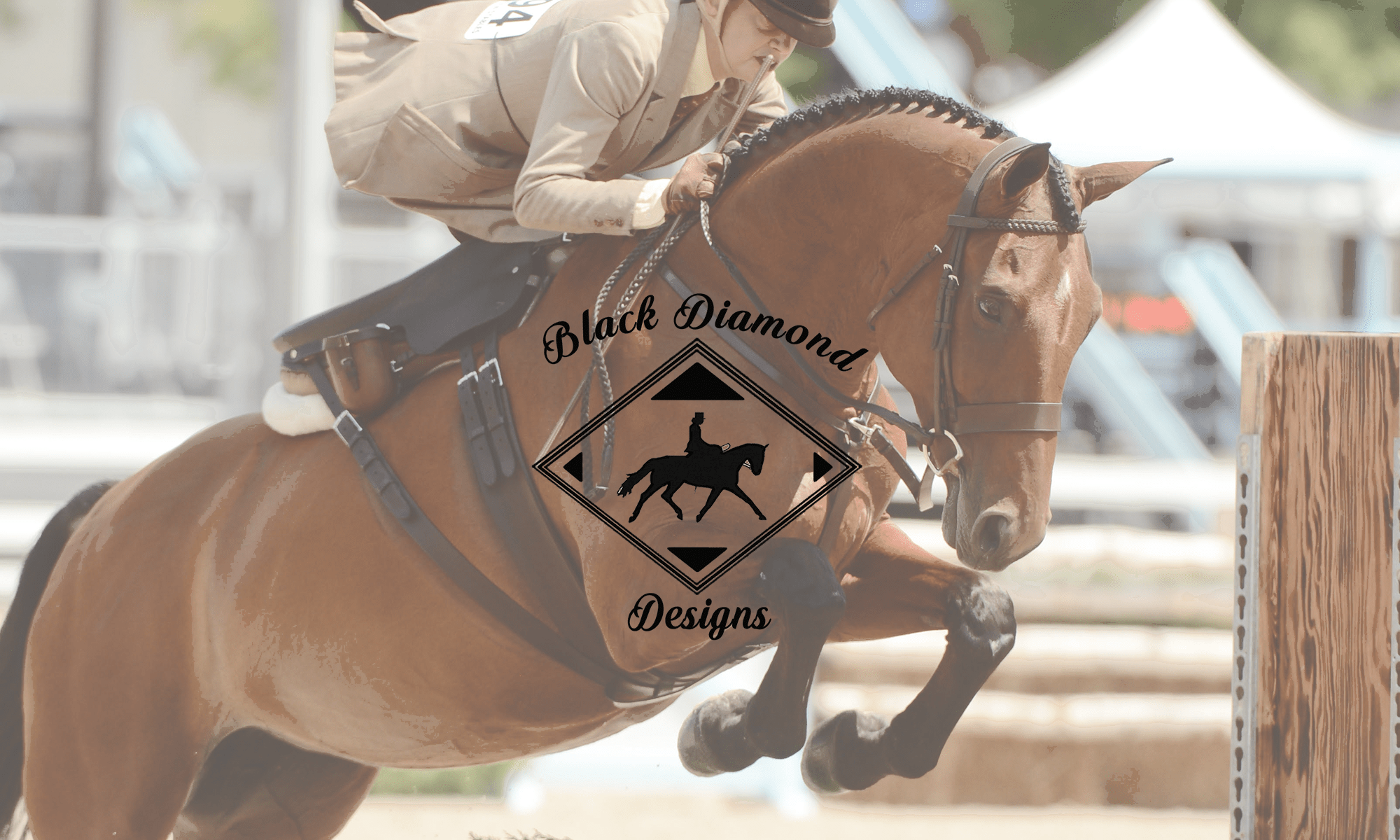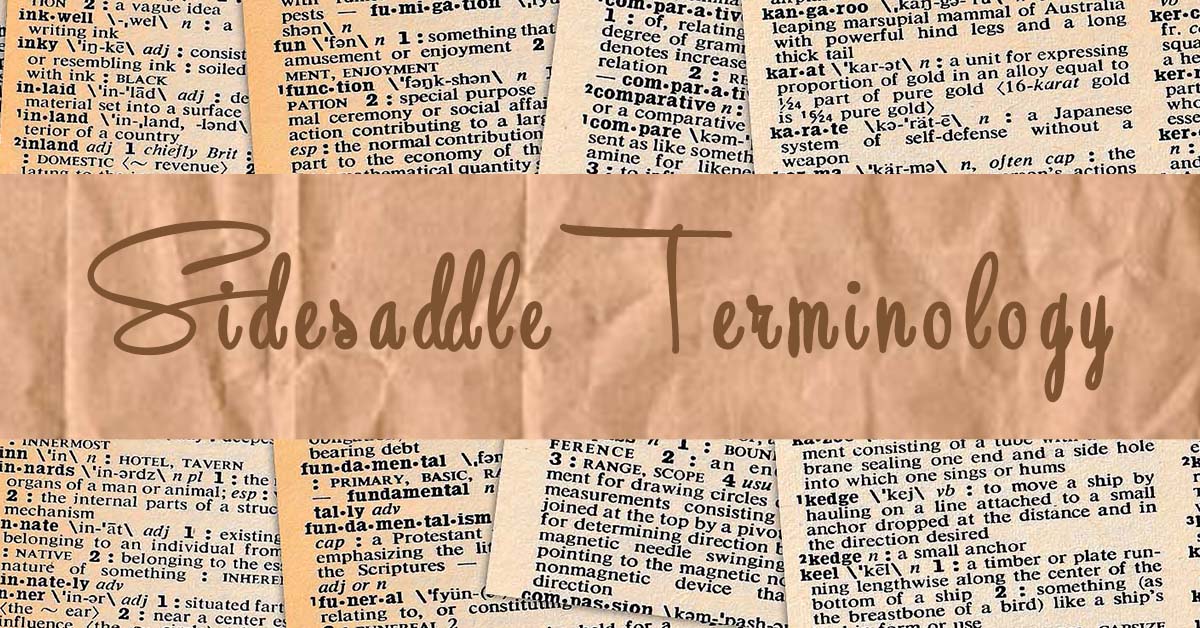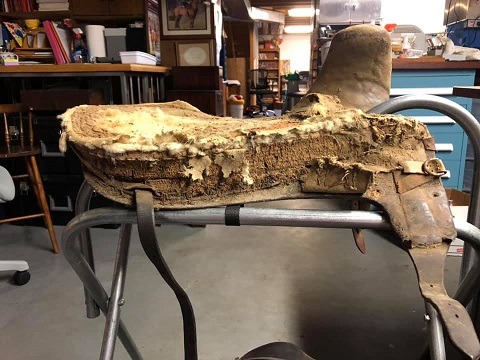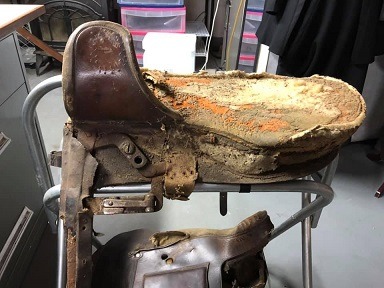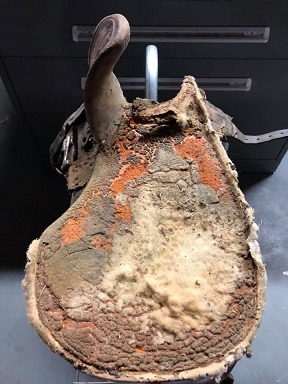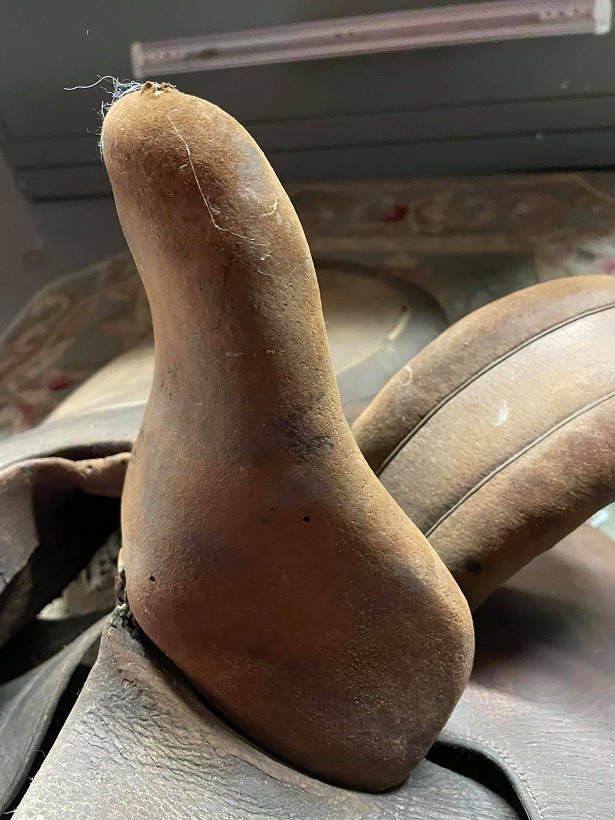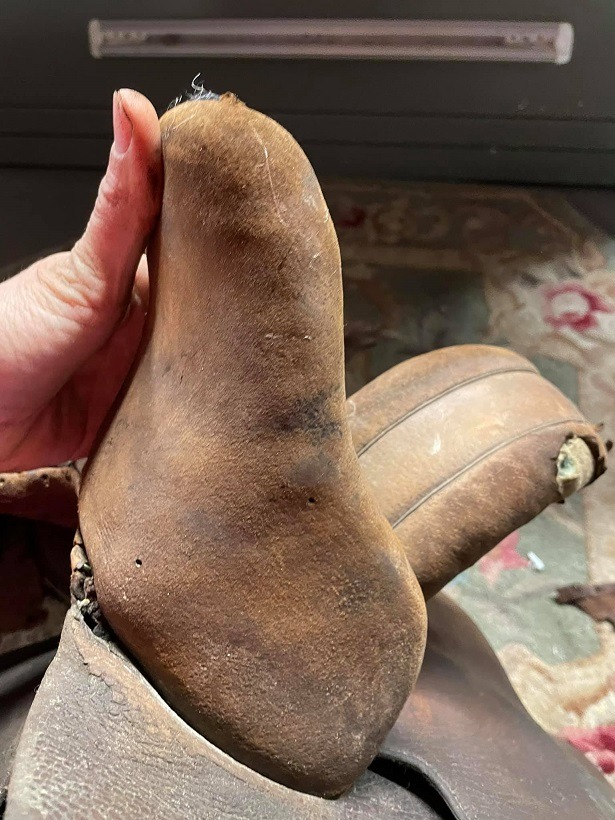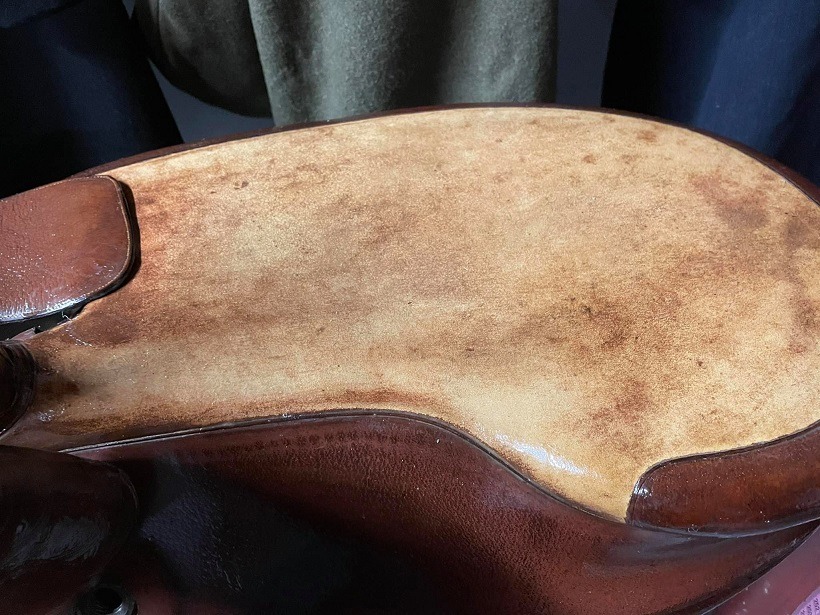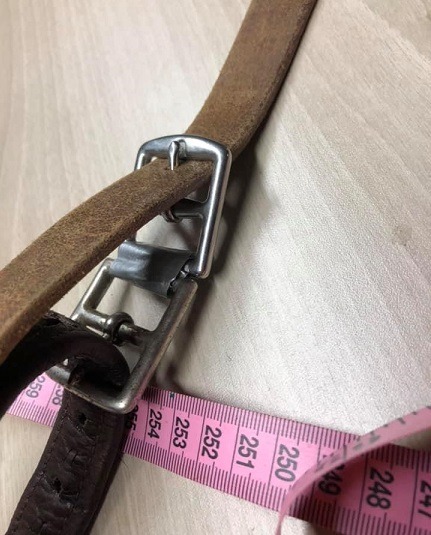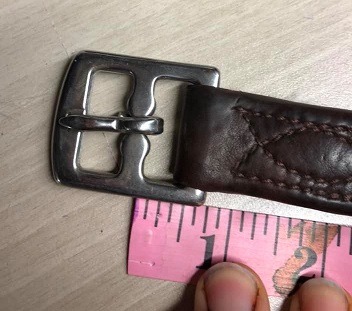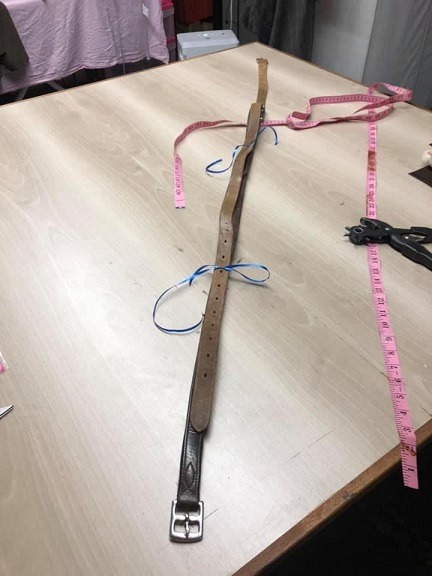Sidesaddle, like most things, comes with its own terminology and “stuff”. Check out the BRIEF descriptions of commonly used terms below.
Saddles, Tack
- Balance Strap: This leather strap buckles like a girth near the stirrup iron, runs on top of the regular girth (under the horse’s belly) and attaches toward the back of the saddle on the other side of the saddle. When riding aside it is an important piece of tack that enhances safety for the rider and a more comfortable experience for the horse.
- Chape: The piece of material (leather, nylon, etc.) that goes around a buckle and is stitched to the main body of the tack. Think – how the buckles are attached to your girth.
- Fixed Head: The protruding piece on the top of any sidesaddle (compared to the one below it). This piece is fixed to the sidesaddle and should never wiggle or move.
- Leaping Head: The protruding piece under the Fixed Head of a sidesaddle. This piece can often be unscrewed/removed easily in order to be replaced or reshaped to fit the rider’s thigh.
- Near-side Sidesaddle: The more commonly seen style of sidesaddle, this saddle has the leaping and fixed head on the left side of the horse’s body, meaning the rider’s legs fall to the left side of the horse.
- Off-side Sidesaddle: A less common style of sidesaddle, this saddle has the leaping and fixed head on the RIGHT side of the horse’s body, meaning the rider’s legs fall to the RIGHT side of the horse. It never hurts to note that off-side saddles require a special apron for the rider.
- Tri-Fold Girth: A girth that attaches to the saddle with two buckles on both ends, just as many modern girths do. The difference is that a Tri-Fold is a thinner piece of leather folded three times, then stitched together. This is the construction method historically used to make a grith and is most appropriate in historical presentation-type situations.
- Plaited: A style of leather work where the leather is braided as opposed to in one piece.
- Queen: Used to help position the right thigh (in a near-sided saddle, left in an off-side saddle) into the proper place to allow for a comfortable and correct position. Typically fits over the fixed head of the sidesadde and buckles under the leaping head iron.
- Sidesaddle Iron: the stirrup! With a sidesaddle there is only one “iron” as opposed to two “stirrups”.
Rider, Attire, Events, Etc.
- Appointments Class: A common class offered when showing sidesaddle, the Appointments Class is a flat class (walk, trot, canter) that requires you to emulate the historical turnout of a lady in the hunt field. Carrying a hunt whip, rain gloves, and a sandwich case are just a few of the requirements. It is imperative to read the USEF rulebook for the full requirements and description of the class if you are interested in competing.
- Aside vs Astride: when you are riding in a sidesaddle it is called “riding aside” – you have both legs on one side of the horse. The opposite would be “riding astride” – with one leg on each side of the horse.
- Apron: The “skirt” worn when riding aside; it covers the legs and waist. Historically it was to preserve the ladies’ modist appearance and keep her warm while out hunting.
- Habit: The outfit worn by a sidesaddle rider – typically refers to the apron (skirt) and jacket.
Please note – this list is a work in progress. If you think of a term worth defining – drop me a note!
